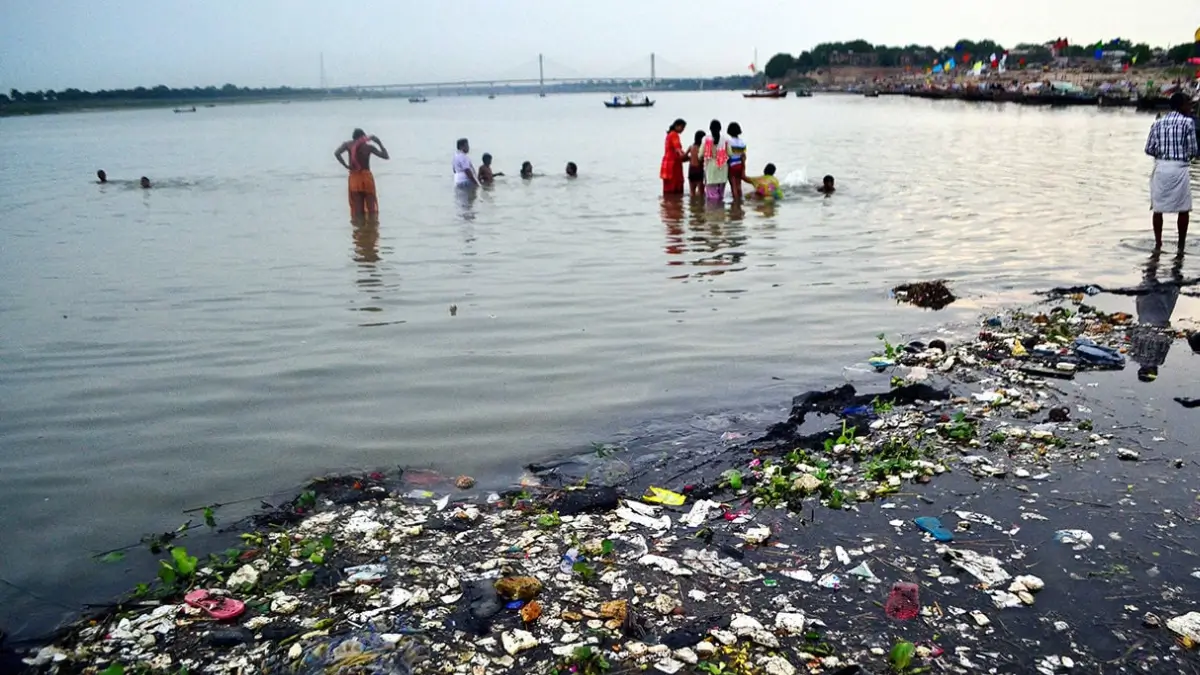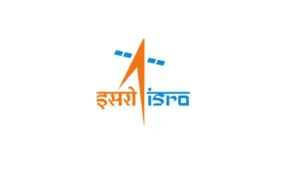The Ganga River, one of India’s most revered rivers, holds deep religious significance for millions of devotees. Every year, especially during the Maha Kumbh Mela, millions gather to take a holy dip in the river’s waters, believing it will cleanse them of sins. However, recent reports from the Central Pollution Control Board (CPCB) have raised serious concerns regarding the presence of faecal coliform bacteria in the waters at Prayagraj, particularly during the ongoing Maha Kumbh Mela. This contamination, primarily due to untreated sewage discharge, is not just an environmental issue but a significant public health risk. This article delves into the impact of faecal bacteria on human health and the steps being taken to address this growing concern.
What is Faecal Coliform and Why Is It Dangerous?
Faecal coliform is a group of bacteria typically found in the intestines of humans and animals. Their presence in water bodies like rivers and lakes is a clear indicator that the water has been contaminated with animal or sewage waste. Although not all types of coliform bacteria are harmful, their presence often signals the likelihood of other dangerous pathogens being present, including viruses, Salmonella, and E. coli. These pathogens are known to cause a variety of serious health issues, making their detection in the Ganga particularly concerning.
The importance of faecal coliform as an indicator of water contamination lies in its ability to signal the presence of other more harmful microorganisms. The human intestines are home to bacteria that can be harmful if ingested or exposed to sensitive areas of the body. When these bacteria are found in the water, it means there is a higher chance that other diseases are present, posing a significant risk to public health, especially for those who come into direct contact with the water.
How Dangerous is the Contamination in Ganga at Prayagraj?
According to the Central Pollution Control Board (CPCB), the acceptable limit for faecal coliform bacteria in bathing water is 2,500 units per 100 millilitres. However, recent test results from various areas around Prayagraj, especially during the ongoing Maha Kumbh Mela, show levels of faecal coliform far exceeding this limit. This indicates that the water in some areas of the Ganga is heavily contaminated, posing a significant risk to those who come into direct contact with it, including the millions of pilgrims who immerse themselves in its waters during the religious festival.
The contamination is made worse by untreated sewage from nearby settlements, which continues to flow into the river, further degrading the water quality. With millions of devotees entering the water during the festival, the risk of exposure to harmful bacteria and pathogens increases significantly. This is a particularly alarming situation, given the large number of people who are exposed to the water at once, as the bacteria can spread rapidly, leading to the potential for large-scale outbreaks of waterborne diseases.
Health Risks of Faecal Bacteria Exposure
Exposure to water contaminated with faecal coliform can lead to a range of health problems, many of which can be severe and long-lasting. The health risks posed by such contamination are not just limited to short-term illnesses, but can also lead to long-term health complications, especially for vulnerable groups like children, the elderly, and individuals with compromised immune systems. Below are some of the major health risks associated with faecal bacteria contamination:
1. Gastrointestinal Infections:
Bathing in water contaminated with faecal coliform can lead to a variety of gastrointestinal infections, such as diarrhoea, vomiting, and stomach cramps. Pathogens like E. coli and Salmonella, which are often found alongside faecal coliform, are the primary culprits behind such infections. These infections can cause significant discomfort and, in severe cases, may require medical treatment, particularly if dehydration sets in.
2. Skin and Eye Infections:
Contact with polluted water can result in skin rashes, eye irritation, and fungal infections. These infections are common among individuals who come into direct contact with the water during activities such as bathing or swimming in the river.
3. Typhoid and Hepatitis A:
Ingestion of water contaminated with faecal coliform can lead to serious infections like typhoid and hepatitis A. Both conditions are caused by bacteria and viruses found in contaminated water and can lead to long-term health complications, particularly if not treated promptly. Typhoid can cause high fever, weakness, and digestive issues, while hepatitis A affects the liver, causing symptoms like jaundice and fatigue.
4. Respiratory Issues:
Inhaling droplets of water containing faecal coliform can lead to lung infections and other respiratory problems, especially in people with weakened immune systems. This can become a concern during large gatherings, where the water droplets can easily be aerosolized, affecting a wider range of individuals.
Impact on Pilgrims and Local Communities
The primary risk is to the devotees who visit the Ganga River to take a ritual dip, especially during the Maha Kumbh Mela. Many of these pilgrims are unaware of the potential health hazards associated with bathing in contaminated water. The practice of immersing oneself in the sacred waters is believed to purify the soul, but the reality is that it can expose individuals to harmful bacteria and pathogens, leading to various health issues.
The problem extends beyond the pilgrims. Local communities that rely on the Ganga for their daily activities, such as cooking, drinking, and washing, are also at significant risk. Long-term exposure to polluted river water can cause chronic health problems, particularly for children, the elderly, and individuals with low immunity. These communities may also face challenges in accessing clean and safe drinking water, as the Ganga serves as a vital water source for the region.
Measures Being Taken by Authorities
To address the growing health concerns, authorities have been implementing a series of measures to mitigate the risks posed by water contamination. Some of the key steps being taken include:
- Timely cleaning of ghats: Authorities have urged the akharas (religious groups) to adhere to designated timings and vacate the ghats promptly after their rituals to allow proper cleaning of the bathing areas. This will help reduce the accumulation of waste in the water.
- Waste management initiatives: Devotees are requested not to throw shoes, clothes, or other waste into the river, which can further contribute to pollution. To help with waste management, organisers are distributing cloth bags and encouraging the use of steel utensils to reduce plastic waste.
- Awareness campaigns: Educational initiatives are being carried out to raise awareness among the devotees about the health risks of polluted river water and the importance of following the guidelines set by authorities to reduce the contamination levels.
Summary of News: Faecal Bacteria in Ganga at Prayagraj and Its Health Impact
| Aspects | Details |
|---|---|
| Why in News | Faecal coliform bacteria contamination in the Ganga River at Prayagraj has raised serious health concerns, especially during the Maha Kumbh Mela. The presence of these bacteria, mainly due to untreated sewage discharge, is posing significant health risks. |
| What is Faecal Coliform? | A group of bacteria that naturally exist in the intestines of humans and animals. Their presence in water indicates contamination by sewage or animal waste. |
| Why Is It Dangerous? | Not all coliform bacteria are harmful, but their presence signals the potential for other pathogens like Salmonella, E. coli, and viruses, which can cause a range of serious health issues, including gastrointestinal, skin, and respiratory infections. |
| Contamination Levels | The CPCB sets the acceptable limit for faecal coliform at 2,500 units per 100 millilitres. Recent tests in Prayagraj show contamination levels far exceeding this limit, signaling high pollution in the water, especially during the Maha Kumbh Mela. |
| Health Risks of Exposure | Exposure to contaminated water can cause gastrointestinal infections, skin and eye infections, typhoid, hepatitis A, and respiratory issues, especially for vulnerable individuals like children, the elderly, and those with weak immune systems. |
| Impact on Pilgrims and Local Communities | Devotees taking ritual dips in the river are unaware of the health hazards, while local communities relying on the river for drinking, cooking, and washing face chronic health risks from long-term exposure to polluted water. |
| Measures Taken by Authorities | Measures include timely cleaning of ghats, preventing waste disposal in the river, distributing cloth bags and steel utensils to reduce waste, and running awareness campaigns to educate devotees about the health risks of bathing in contaminated water. |



 ISRO Launches RESPOND Basket 2025, Calls...
ISRO Launches RESPOND Basket 2025, Calls...
 LVM3-M6 Rocket Set to Launch on December...
LVM3-M6 Rocket Set to Launch on December...
 Michaela Benthaus to Make History as Fir...
Michaela Benthaus to Make History as Fir...







